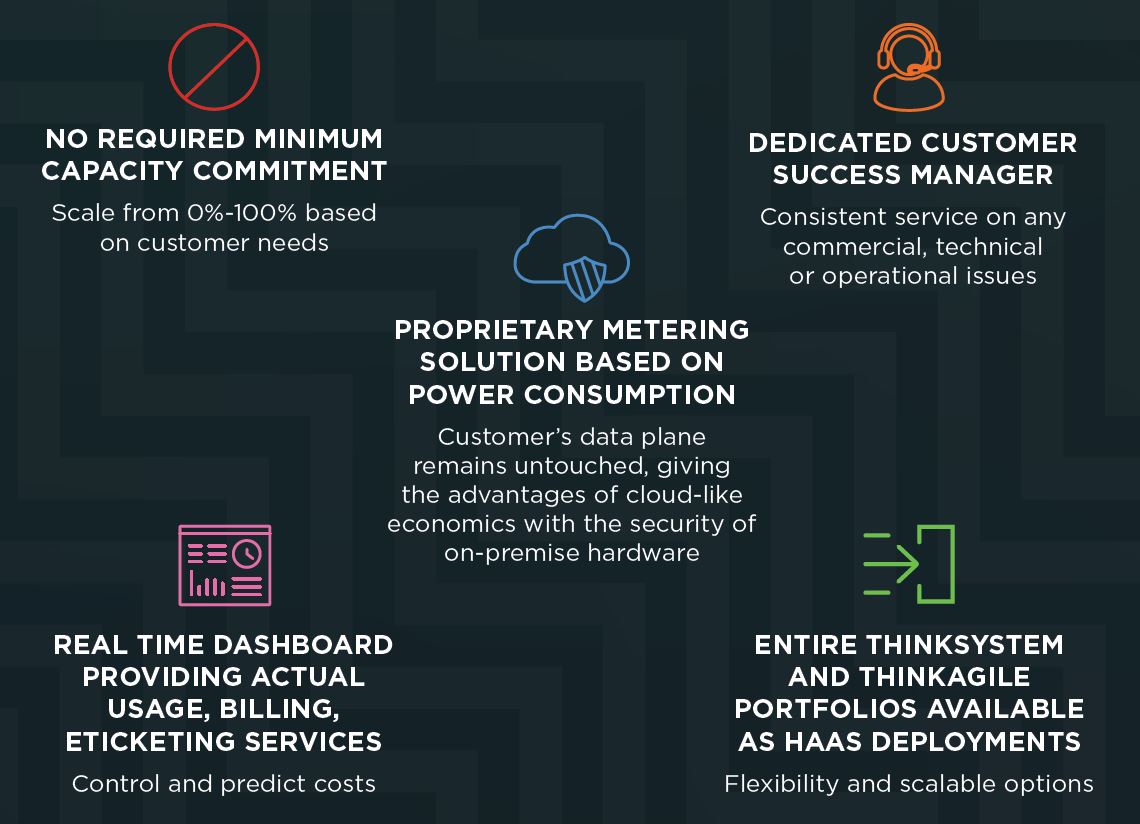One of the biggest challenges that IT organizations face today is around scrutiny of capital expenditures. Instead of depreciating the value of an asset, such as a server, over its lifetime, CFOs and CIOs have become increasingly interested in an OpEx model where expenses can be counted in the same year without the initial capital outlay. Typically that has been a great case for moving workloads to the cloud. Lenovo TruScale infrastructure services allow an organization to have hardware available and billed on a consumption basis.
Lenovo TruScale Infrastructure Services
At its core, the Lenovo TruScale solution is providing an on-prem (customer owned or another location like a colocation facility) hardware as a service (HaaS) model that HPE and Dell EMC have been doing for years. The Lenovo TruScale goes beyond just the hardware and also includes software, management, and even installation/ removal services. For some, this is a way to avoid financing hardware up-front and pay-per-use. Whether as IT folks we like it or not, financing and the way equipment is paid for matters. Lenovo needed this solution to keep up with Dell and HPE.

With Lenovo TruScale, the company claims no minimum capacity commitment and is metering based on power consumption. At STH, we publish a lot of server power consumption figures and modern servers do scale power consumption with performance delivered in many cases although the correlation may not be as exact as it would seem at first.
Lenovo is also making TruScale available to channel partners. This is always an interesting proposition with Lenovo controlling the hardware stack it certainly creates an affinity between the customer and Lenovo instead of the channel partner.
Lenovo ThinkAgile and ThinkSystem products, like the Lenovo ThinkSystem SR650 we reviewed, are available through the Lenovo TruScale program. The availability is today and pricing is bespoke depending on the specific solution so we do not have pricing details.
Ultimately, Lenovo needed to make this move from a competitive standpoint as organizations shift their expectations around how they pay for infrastructure.




